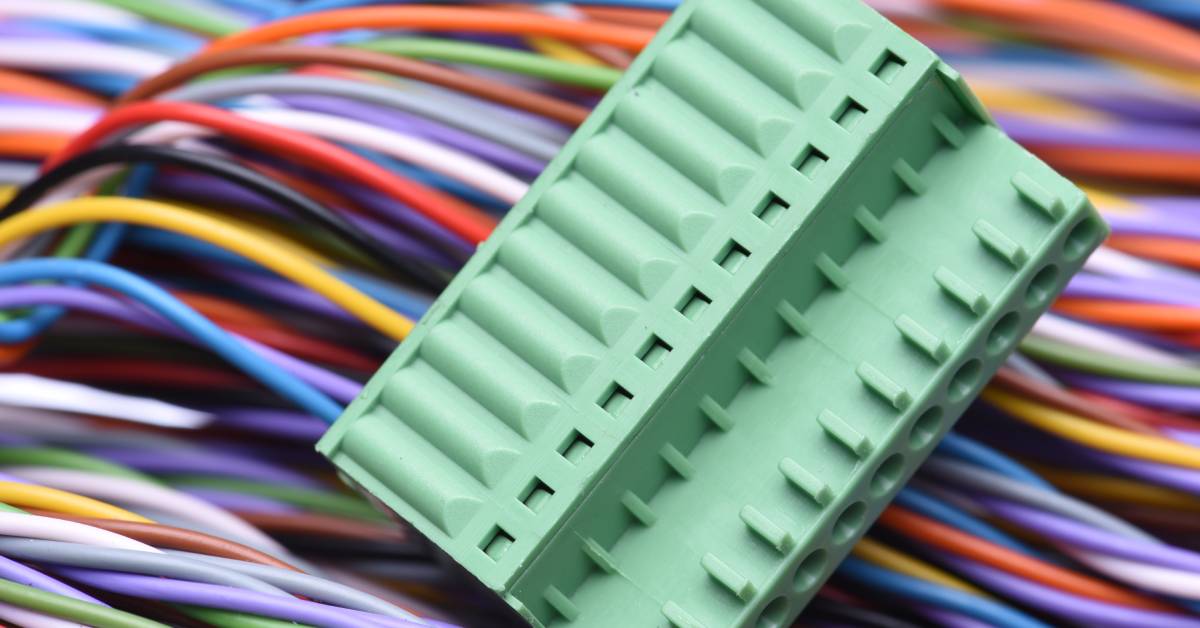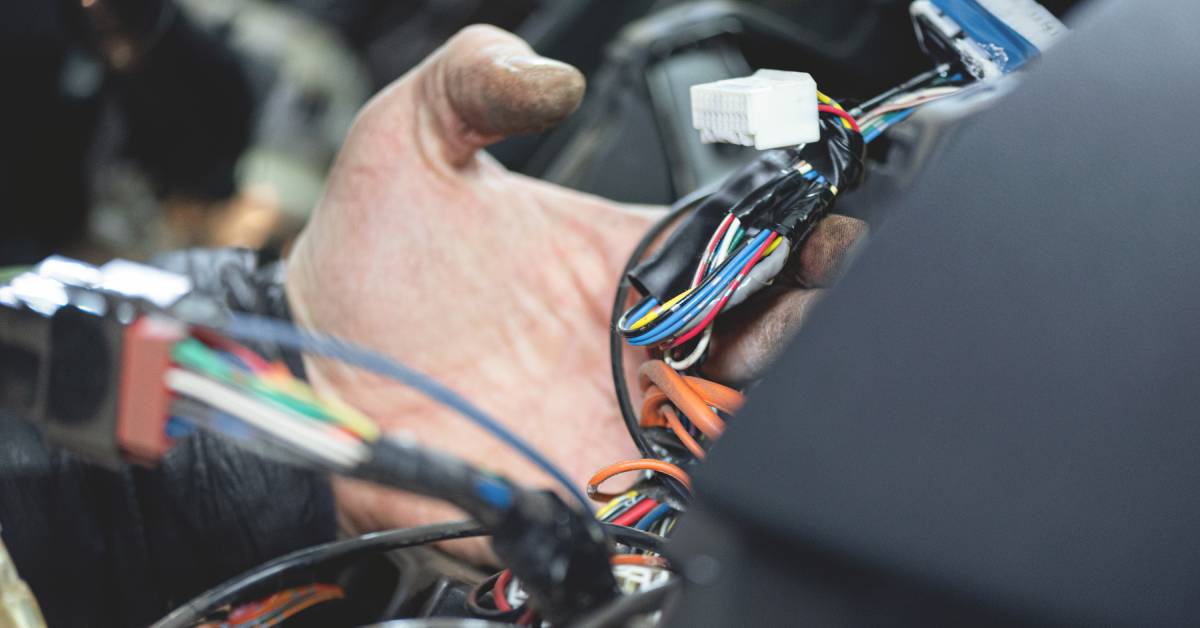How Electrical Connectors and Wiring Works
How Electrical Connectors and Wiring Works

All electronics rely on complex wire systems to deliver power and transmit signals between components. This intricate network of wires requires specialized connectors to create a secure connection. Without wiring and electrical connectors, our devices and vehicles wouldn’t function correctly! Explore the basics of how electrical connectors and wiring work.
Defining Electrical Connectors
Electrical connectors join electrical circuits by creating a mechanical and electrical connection. They generally consist of two major parts: a male and a female component.
When you connect the wires and join both parts of the connector, you create a secure electrical connection that allows current to flow. This simple yet effective mechanism ensures circuits remain uninterrupted and function efficiently.
Types of Electrical Connectors
The various types of electrical connectors include pin, spade, ring, and blade connectors. Each type has a unique shape and function, making connectors suitable for different applications.
Defining Electrical Wiring
Electrical wiring involves installing insulated conductors to carry electricity from one point to another. These wires come in various types:
- Single-core wires consist of a single conductor covered by insulation.
- Multi-core wires consist of multiple conductors within a single cable, each with insulation.
- Coaxial cables consist of an inner conductor surrounded by a layer of insulation and a metallic shield.
Each wire type serves a specific purpose and is ideal for different applications, so understanding their unique characteristics is essential for creating secure connections.
What Is Wire Insulation?
Wire insulation refers to the protective covering that surrounds electrical wires. It is made of non-conductive materials—plastic, rubber, or vinyl—and acts as a barrier between the current-carrying wire and external objects. Insulation prevents accidental contact with live wires, which could result in electrocution or damage to equipment.
Insulation also maintains conductivity by preventing contact between different wires or parts of a circuit. This controls the flow of electricity and prevents interference with other components.
What Is Wire Gauge?
Wire gauge is a measurement that determines a wire’s size and capacity. It refers to the diameter of the wire, with smaller gauge numbers representing larger wires. This measurement also determines how much current can safely flow through the wire without causing damage or overheating.
Wires and Voltage
Wires can handle specific voltage levels depending on the application. Using the correct wire for a particular voltage range is crucial, as using the wrong wire can result in short circuits and potential hazards.
Safety Considerations for Electrical Wiring
Safety should always be a top priority when working with electrical wiring. One of the most critical aspects to consider is the insulation of wires. Insulation prevents electrical shocks and short circuits, making it essential to ensure all wires are covered. If you notice damage to the wire insulation, repair or replace it immediately to avoid electrical hazards.
Electrical wires should be securely connected and never loose, as this can lead to electrical faults, fires, or other serious issues.
The Role of Connectors and Wiring in Electrical Systems

Electrical connectors and wiring form the backbone of any electrical system. They ensure electrical current flows smoothly from one component to another, enabling the system to function.
The Importance of Connectors
Connectors are essential for connecting different parts of an automobile’s electrical system. For instance, a standard sedan may need a 3-wire electrical connector to connect the wires of external lights to control modules. A vehicle may also need spade connectors for connecting wires to battery terminals. These connections are critical for a vehicle’s functions and to ensure safety on the road.
The industrial sector also relies on electrical connectors to power heavy machinery such as skid steers, forklifts, and cranes. These types of vehicles usually use connectors with more pins than the ones in cars.
Types of Vehicles That Use Connectors
Numerous types of vehicles use electrical connectors. Luckily, electrical connectors support safe and efficient operations for the following vehicles:
- Cars and trucks
- Motorcycles
- Boats
- Trains
- Aircraft
The Importance of Wires
Wires are as crucial as connectors since they serve as pathways for electrical current to flow. Proper wiring ensures all electrical components receive the necessary power to function. A vehicle may experience various issues, including engine failure or electrical malfunctions, without adequate wiring and connections.
Tips for Buying Automotive Connectors
Understanding how electrical connectors and wiring work is essential when selecting connectors for your vehicle. Here are some tips to keep in mind when buying automotive connectors:
- Know the requirements of your vehicle’s electrical system
- Choose high-quality connectors from reputable brands
- Consider the ideal type and size of wire for the connector
- Make sure the connectors are compatible with your vehicle’s make and model
- Follow recommended installation procedures to ensure a secure and reliable connection
By understanding the importance of electrical connectors and wiring, you can ensure your electronic devices and vehicles continue to function correctly.
How To Install Automotive Connectors

One often overlooked aspect of vehicle maintenance is the automotive connector. These small components play a significant role in ensuring your car runs smoothly on the road.
Essential Tools for Installation
Before beginning installation or replacement, you’ll need to gather some tools:
- Wire strippers
- Crimping tools
- Soldering iron
- Multimeter
- Wire connectors
Note the Wire Colors
Car manufacturers often color code the wires and terminals of connectors to indicate where each wire should go through. For example, you should install a four-pin connector with red, blue, green, and brown wires in the same order, passing them through terminals of the corresponding color.
Begin the Installation
In order to conduct replacements safely, install a new connector by disconnecting the car battery. This prevents accidental shorts and shocks. After disconnecting the battery, cut away the damaged connector close to the connector itself to preserve as much wire length as possible.
Next, use the wire strippers to strip the wire and expose about half an inch to ensure a good connection. Then, slide the new connector onto the wire and use a crimping tool to secure it. Apply firm pressure to avoid loose connections. Finally, reconnect the battery and test the connection with a multimeter to ensure everything is functional.
Order Automotive Connectors
Connector Experts has the largest selection of in-house, OEM-certified automotive connectors. We offer competitive prices and expert advice for all your connector needs. Shop our collection to view our many options, or contact our team for assistance.

You must login to post comments.